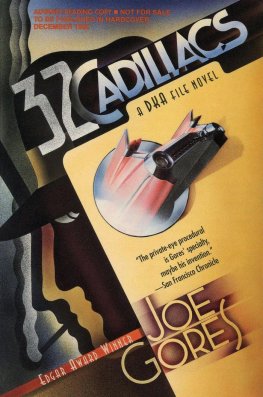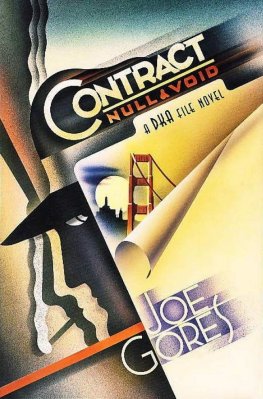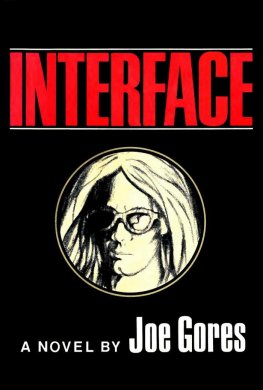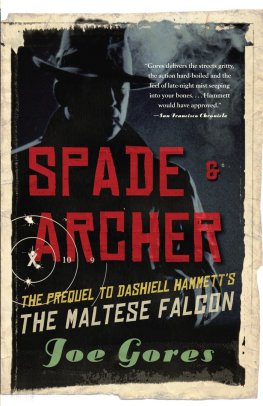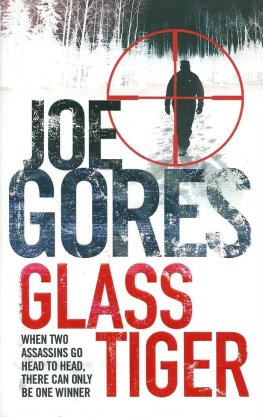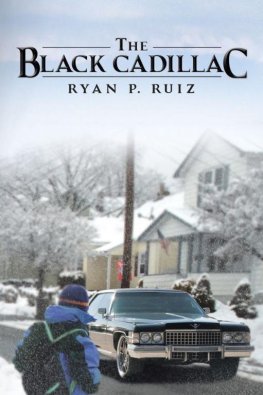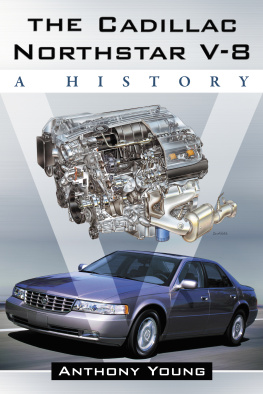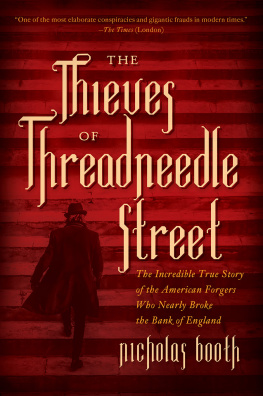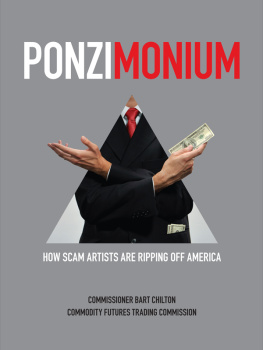This book is for
My beloved Dori
Who helped me snatch a Cadillac from
Mafia hitman Jimmy The Weasel Fratianno
on our first date
Every man is as Heaven made him, and sometimes a great deal worse.
Miguel de Cervantes
Don QuixotePlease dont talk, said the nun. Its dangerous for you to talk, youre very seriously ill.
Not so seriously as youre well. How dont you enjoy life, mother. I should laugh all round my neck at this very minute if my shirt wasnt a bit on the tight side.
It would be better for you to pray.
Same thing, mother.
Joyce Cary
The Horses MouthI offer the usual disclaimer: the characters, events, and places in this novel are totally fictional, products of the authors lively imagination. Now, having said that:
Once upon a time a band of Gypsies really did rip off thirty-two cars from a large San Francisco Bay Area bank in a single day. During the next months David Kikkert & Associates, hired to recover them, grabbed twenty-nine of the thirty-two all over the U.S.A. (including Hawaii) and in Mexico.
Heres where, in 32 Cadillacs, the currency of truth becomes funny money, for not every repo in the novel took place while tracking down these Gypsies during a twenty-six-day time frame. Some were stretched a bit, others were from elsewhere in my dozen years as a legal car thief, but all really happened even Lake Shore Drive in Chicago and the Lovellis in Nebraska.
Although my stance toward the rom during my detective career was strictly adversarial, my Gypsy lore in 32 Cadillacs is as honest as research and experience can make it, as are their scams, cons, and grifts. And I have tried to make my fictional Gypsies realistic and fun without sentimentalizing them. If you sentimentalize Gypsies, you run the risk of ending up with a car that wont run, a roof that wont stop the rain, or a driveway that comes up on the sole of your shoe.
On that note: our society becomes ever more bland, ever more afraid of countless pressure groups poised to scream foul if their particular toe gets stepped on. In 32 Cadillacs they can find a lot to scream about. But to sanitize the tough and lively world I am writing of would be to make its people mere hollow reeds, the novel itself an exercise in futility.
The amount you can withdraw from a bank account without federal scrutiny is under $10,000, so actually my Gypsies should be moving $9,999.99 around during their bank scam. It was just a lot less cumbersome to make it an even 10K.
Bizarre as they might seem, the shenanigans at the Giggling Marlin in Cabo San Lucas are a real, nightly occurrence.
Finally, I want to round up the usual suspects:
First, foremost, and always, Don beloved wife, best friend, peerless editor, critic, greatest support who bled a lot over this book and lent it her own invaluable Gypsy research.
My agents, Henry Morrison and Danny Baror, poked and prodded and threatened and cajoled and never lost faith.
Otto and Carolyn Penzler, early enthusiasts when they were Mysterious Press, and Bill Malloy, who continued their enthusiasm after he took over as editor-in-chief of Mysterious.
Martin Cruz Smith shared his research from Gypsy in Amber and Canto for a Gypsy, his lovely wife, Em, did the same with the notebooks and diaries from her remarkable clergyman grandfathers lifelong involvement with the Gypsies.
Inspector Victor Rykoff, SFPD Bunco, is not anything at all like Dirty Harry Harrigan; and no one like Stan Groner was ever remotely involved in the Great Gypsy Hunt.
Don Westlake found these tales amusing over a long Mohonk weekend, and later, during a train ride in Spain, suggesting sharing a chapter of this book with one of his own (it turned up in his Dortmunder classic, Drowned Hopes).
Finally, the real guys and gals of the once-real DKA:
Dave Kikkert (R.I.P.)
Hiroko Ono (R.I.P.)
Ronile Lahti
Maurice James OBrien
Floyd Ryan
Ken Warner
Isadore Izzy Martinez
and
the Me I was then
Gang, I couldnt spin all these tales without you.
Joe Gores
San Anselmo
April, 1992
At 5:04:09 P.M. on a Tuesday, October 17, Daniel Kearny Associates narrow high-shouldered old charcoal Victorian at 760 Golden Gate Avenue... fell over.
Seven-point-two on the Richter scale. Thats all it took.
In the Gay 90s the old building had been a high-class bawdy house for San Franciscos movers and shakers, and Dan Kearny had just gotten Landmark status for it by shaming the City into honoring these fallen women among its other heroes madmen, tarnished athletes, dishonest cops, corrupt politicians.
But what the State of California had been unable to do in ten years of trying, the San Andreas fault, after gulping downtown Santa Cruz a hundred miles south, accomplished with a discreet belch. Only because DKA had closed early for the World Series was no one hurt during those seventeen violent seconds in which 760 was gone, gone to dust, its memories with it.
Which left the DKA Head Office (Branch Offices in All Major California Cities) abruptly located Nowhere. Yet Giselle Marc, DKas office manager, when surveying the tipsy splintered remains the next morning, sighed as much for the ghosts of scented ladies and boar-eyed power brokers as for DKas current plight.
The damnedest finest ruins, she murmured, echoing San Franciscos epitaph after the Big One in 06.
Giselle, who combined an M.A. in history with her own P.I. license, was an exquisite racehorse blonde with bedroom eyes that masked boardroom brains. Brains discovered to their sorrow by many of DKas cockier adversaries just moments before the hammer fell on them.
I wish Richter had gotten flattened himself, before he invented the damn scale, Dan Kearny growled.
Kearny was a flint-faced 52, with icy grey eyes and a cement-mixer jaw, his thinning curly hair getting frosty around the edges. His nose obviously once had met an object harder than itself moving very rapidly in the opposite direction.
What good would that have done, Danl? Somebody else just would have come up with a measurement for seismic activity.
Seven-point-two on the Smith scale? He chuckled for the first time in two days. Well, what the hell, the place had gotten too small for us, anyway.
Which was true. The upstairs clerical offices had been a rabbit warren of tiny rooms crowded with too many people and too much equipment, and Kearny and the field men had been crammed into mouseholes in an under-the-building garage with room left over for only a repo or two. For over a decade DKA had leased storage lots all over town for the cars it had repossessed.
I wonder if the phones still work? Kearny muttered.
They didnt. But those down at 340 Eleventh Street did. Years before, when the state first started trying to get the old Victorian condemned for a Social Services parking lot, Kearny had bought a disused laundry South of Market as a backup site, and had been desultorily remodeling it a weekend at a time ever since. Now, suddenly, that old laundry was the New Jerusalem.
As Kearny and Giselle talked, by honest, genuine, sheer chance, a man calling himself Karl Klenhard and his wife of over fifty years, calling herself Margarete, were waiting for the light at a corner in Steubenville (Where the Tall Corn Grows), Iowa. Steubenville not to be confused with the much more nifty Steubenville in Ohio was county seat for 9,581 souls and several hundred square miles of rich alluvial flatland below the bluffs of the Mighty Mississippi.
Steubenville had been settled in the late 1800s by farmers from Trier, Prussia; in those early days, paddlewheel steamers plying the river offered tempting access to markets for their produce. But times change, markets shift, prices rise and fall, and with the Midwest farm crunch Steubenville had become Stupidville to those unfortunate enough to still live there.

